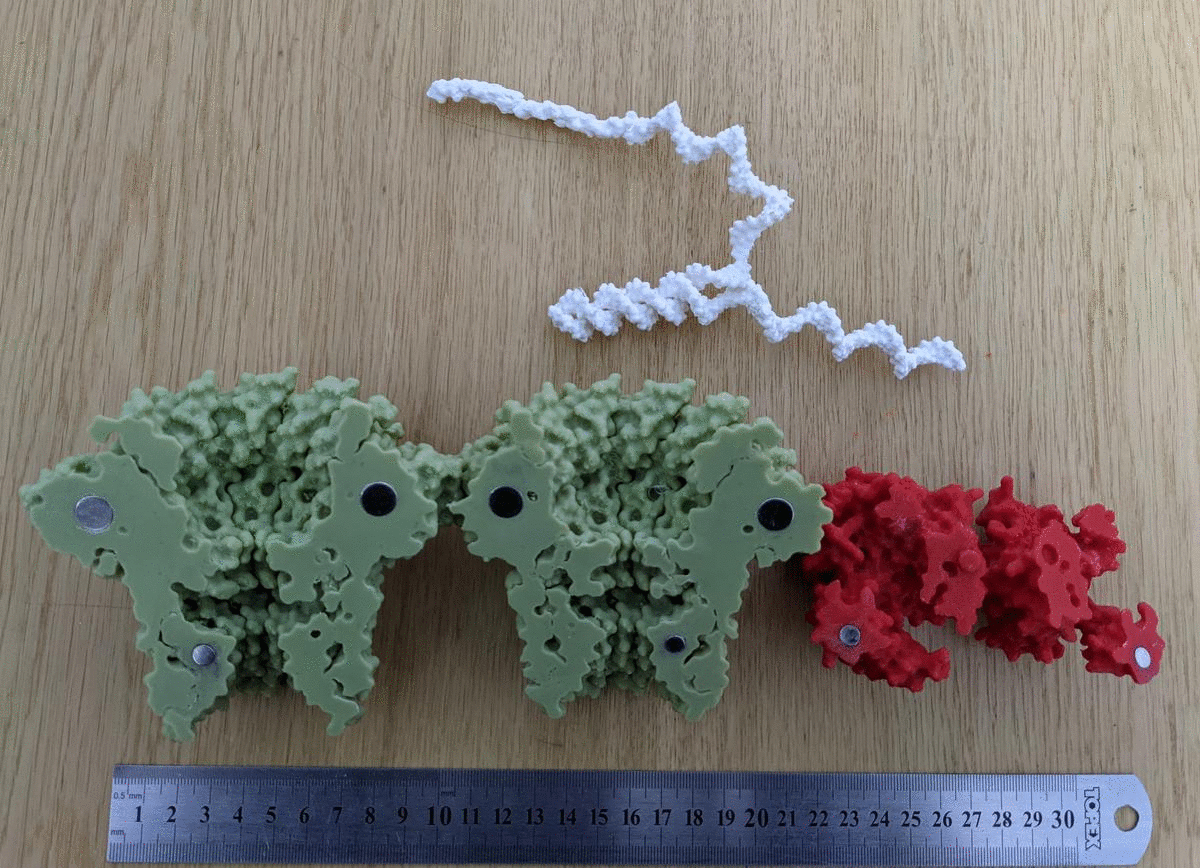3D Printed model of DNA-Sequencing Nanopore

DNA sequencing has revolutionized the study of biology. Its latest iteration - Nanopore sequencing, is rapidly developing due to the low cost of the device itself and the wide applicability of the technology. The 3D printed model is a great addition to any lectures on sequencing with protein nanopores. The model itself is consists of a nanopore (PDB ID 6si7), the bacteriophage phi29 DNA polymerase (PDB ID 1xhz), and a piece of DNA. The nanopore and polymerase are sliced in half and have locations for magnets, while the DNA is printed in flexible TPU. The whole complex can be assembled and disassembled really easily. Got my inspiration from the PDB 101 Molecule of the Month page. All files required for 3D printing the model, including instructions on how to print it, are freely available on NIH 3D Print Exchange Server.




Join the FEBS Network today
Joining the FEBS Network’s molecular life sciences community enables you to access special content on the site, present your profile, 'follow' contributors, 'comment' on and 'like' content, post your own content, and set up a tailored email digest for updates.
Great idea, Marius, and very good looking. thinking of the slice and magnets is wonderful.
May I ask how did you model the DNA piece?
That was a bit tricky and is not modeled as you might expect. The part that goes through the pore is PDB ID 4OCB , but after printed was slightly heated and straightened to fit. The DNA portion from the polymerase is a random sequence created in UCSF Chimera. Each strand was exported individually and after printing, one strand was slightly heated again and bent to fit the polymerase channel. Then the three parts (4OCB, the two strands of DNA) were glued together.